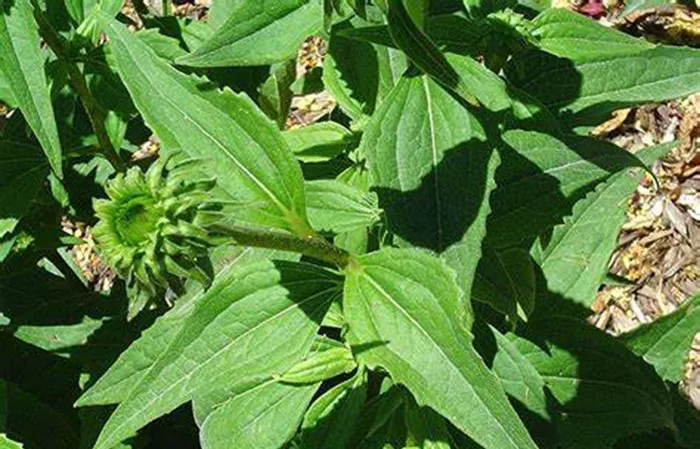Coneflower leaves are often overshadowed by their vibrant blooms, but they possess a charm of their own. These leaves play a crucial role in the plant’s health and appearance. From their texture to their shape, each detail contributes to the coneflower’s overall allure. Understanding the characteristics of coneflower leaves can enhance our appreciation for this beloved garden plant. Let’s delve into the fascinating world of coneflower foliage and uncover what makes these leaves truly remarkable.
The Appearance of Coneflower Leaves
Shape and Size
Coneflower leaves are a study in variety. They typically have a lanceolate or ovate shape, with some species featuring more elongated or rounded forms. The length can range from a few inches to over a foot, depending on the variety. These leaves are often arranged alternately along the stem, creating a visually appealing pattern. The edges may be smooth or serrated, adding texture and interest to the plant’s appearance.
Color and Texture
The color of coneflower leaves is another defining feature. Most coneflowers have leaves that are a rich, deep green, though some cultivars may exhibit hints of blue or gray. The texture is equally noteworthy. The leaves are often slightly rough to the touch, with a somewhat leathery feel. This texture helps the plant retain moisture and withstand harsh weather conditions. The veins are prominently visible, contributing to the leaf’s overall structure and appearance.
Seasonal Changes
Coneflower leaves undergo noticeable changes throughout the seasons. In spring, they emerge with a fresh, bright green hue, full of vitality. As summer progresses, the leaves may develop a deeper, more mature green color. In autumn, some coneflower leaves may take on shades of yellow or bronze, adding to the seasonal beauty of the garden. Even in winter, the dried leaves can provide a unique texture against the backdrop of snow.
The Function of Coneflower Leaves
Photosynthesis and Nutrient Absorption
The primary function of coneflower leaves is photosynthesis. These leaves capture sunlight and convert it into energy, fueling the plant’s growth and development. The large surface area of the leaves allows for efficient absorption of light. Additionally, the leaves play a crucial role in nutrient absorption. They draw in water and essential nutrients from the soil, ensuring the coneflower remains healthy and vibrant.
Adaptation to Environment
Coneflower leaves have evolved to thrive in diverse environments. Their thick, slightly waxy texture helps reduce water loss in dry conditions, making coneflowers well-suited to drought-prone areas. The serrated edges and rough surface also deter pests and herbivores, providing a natural defense mechanism. These adaptations highlight the resilience and versatility of coneflower leaves.
Caring for Coneflower Leaves
Proper Watering and Soil Conditions
To ensure the health of coneflower leaves, it is essential to provide proper care. Watering is a key factor. Coneflowers prefer well-drained soil and do not tolerate waterlogged conditions. Overwatering can lead to root rot and leaf diseases. It is best to water deeply but infrequently, allowing the soil to dry out slightly between waterings. The soil should be rich in organic matter to support healthy root development and nutrient uptake.
Pruning and Maintenance
Pruning can help maintain the appearance and health of coneflower leaves. Removing any damaged or yellowing leaves can prevent the spread of disease and encourage new growth. Deadheading spent blooms can also promote a second flush of flowers, keeping the plant looking fresh and vibrant. Regularly inspecting the leaves for signs of pests or disease is important. Early detection and treatment can prevent issues from becoming severe.
Pest and Disease Management
Coneflower leaves are generally hardy, but they can still be susceptible to pests and diseases. Common pests include aphids and spider mites, which can be controlled with insecticidal soap or neem oil. Fungal diseases, such as powdery mildew, may also affect coneflowers, especially in humid conditions. Ensuring good air circulation around the plants and avoiding overhead watering can help prevent these issues.
Incorporating Coneflowers into Your Garden
Companion Planting
Coneflower leaves not only enhance the beauty of the plant but also contribute to the overall harmony of the garden. They pair well with a variety of other plants, creating a balanced and visually appealing landscape. Planting coneflowers alongside other native perennials, such as black-eyed Susans or bee balm, can create a vibrant and pollinator-friendly garden. The leaves of these companion plants complement the coneflower foliage, adding depth and texture to the garden bed.
Aesthetic Appeal
The unique appearance of coneflower leaves adds a natural and rustic charm to any garden. Their lanceolate shape and textured surface create visual interest, especially when contrasted with smoother-leaved plants. The seasonal changes in leaf color also provide a dynamic element to the garden, offering beauty throughout the year. Whether planted in a formal border or a wildflower meadow, coneflowers and their leaves are sure to enhance the overall aesthetic.
Attracting Wildlife
Coneflower leaves and blooms are a magnet for wildlife. The nectar-rich flowers attract bees, butterflies, and other pollinators, while the sturdy leaves provide shelter and perching spots for insects and small birds. By incorporating coneflowers into your garden, you are not only adding beauty but also creating a habitat that supports local wildlife. This makes coneflowers an excellent choice for eco-friendly gardening.
Conclusion
In conclusion, the leaves of the coneflower are an integral part of this plant’s allure. Their unique shape, texture, and color contribute to the coneflower’s beauty and resilience. By understanding and appreciating the characteristics of coneflower leaves, we can better care for these plants and enhance their presence in our gardens. Whether admired for their aesthetic appeal or valued for their ecological benefits, coneflower leaves truly deserve our attention and admiration.


